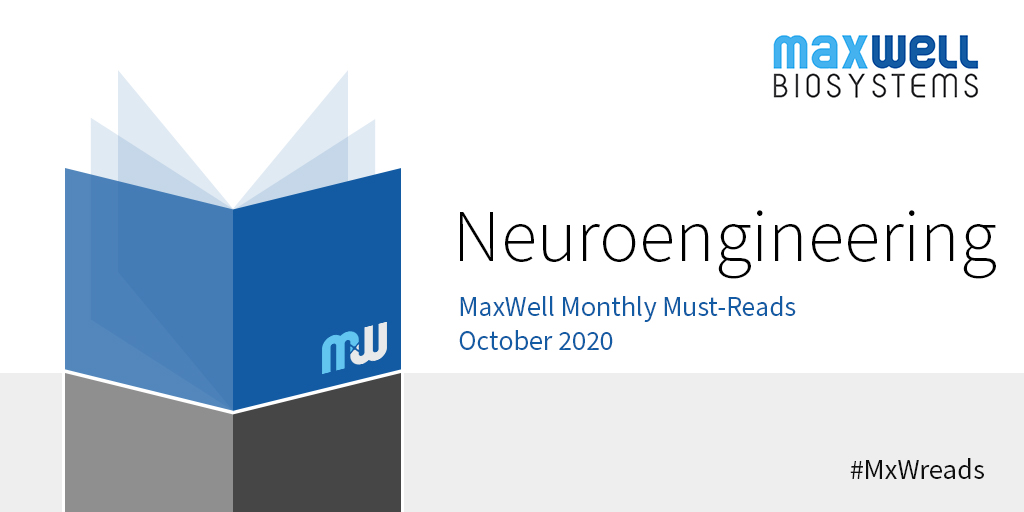

It is already time for the 10th edition of our monthly blog. We hope you enjoyed last month’s post about microelectrode array (MEA) technology for drug screening as well as our previous posts about a variety of scientific topics (Beta Cells, Burst Detection, Axons, Retina, Organoids, Human iPSC-Derived Neurons, Neurons and Viruses and Spike Sorting).
In our October edition, we highlight the latest developments on Neuroengineering, with a focus on development of technologies for manipulating neural networks. We highlighted the article written by Kim et al. which describes a magnetically actuated microrobot for targeted neural cell delivery. Please find a summary below.
A magnetically actuated microrobot for targeted neural cell delivery and selective connection of neural networks.
by Eunhee Kim, Sungwoong Jeon, Hyun-Kyu An, Mehrnoosh Kianpour, Seong-Woon Yu, Jin-young Kim, Jong-Cheol Rah and Hongsoo Choi. Science Advances. September 2020.
Kim e. et al. demonstrate the versatility of neuron-loaded microrobot for selective connection of neural networks, in vitro. The functional connectivity among neural clusters was verified by measuring extracellular action potential propagation by high-density (HD)–multielectrode array (MEA) technology. Action potentials were evoked by targeted single-neuron electrical stimulation and traveled across neural clusters, which were connected by magnetically actuated microrobots. The ability to control and induce selective connection and active formation of neural networks bears the potential to develop therapeutics for axonal growth from injured neuronal networks. Finally, the method presented by the technology presented by the authors can be used to assess the effect of drugs on specific synapses with high sensitivity.
Read the paper here.
Although we decided to highlight the article by Kim et al., we selected four scientific articles that delve into the topic of the latest developments in Neuroengineering. These can be found below:
- Deep brain optogenetics without intracranial surgery.
by Ritchie Chen, Felicity Gore, Quynh-Anh Nguyen, Charu Ramakrishnan , Sneha Patel , Soo Hyun Kim, Misha Raffiee, Yoon Seok Kim, Brian Hsueh, Esther Krook-Magnusson, Ivan Soltesz and Karl Deisseroth. Nature Biotechnology. October 2020.
Read the paper here. - Toward neuroprosthetic real-time communication from in silico to biological neuronal network via patterned optogenetic stimulation.
by Yossi Mosbacher, Farad Khoyratee, MiriGoldin, Sivan Kanner, Yenehaetra Malakai, Moises Silva, FilippoGrassia, Yoav Ben Simon, Jesus Cortes, Ari Barzilai, Timothée Levi and Paolo Bonifaz. Scientific Reports. May 2020.
Read the paper here. - A Neuromorphic Prosthesis to Restore Communication in Neuronal Networks.
by Stefano Buccelli, Yannick Bornat, Ilaria Colombi, Matthieu Ambroise, Laura Martines, Valentina Pasquale, Marta Bisio, Jacopo Tessadori, Przemysław Nowak, Filippo Grassia, Alberto Averna, Mariateresa Tedesco, Paolo Bonifazi, Francesco Difato, Paolo Massobrio, Timothee Levi and Michela Chiappalone. iScience. September 2019.
Read the paper here. - A biohybrid synapse with neurotransmitter-mediated plasticity.
by Scott T. Keene , Claudia Lubrano, Setareh Kazemzadeh, Armantas Melianas , Yaakov Tuchman, Giuseppina Polino, Paola Scognamiglio, Lucio Cinà , Alberto Salleo , Yoeri van de Burgt and Francesca Santoro. Nature Materials. June 2020.
Read the paper here. You can find more about this article here and here.
 English
English


